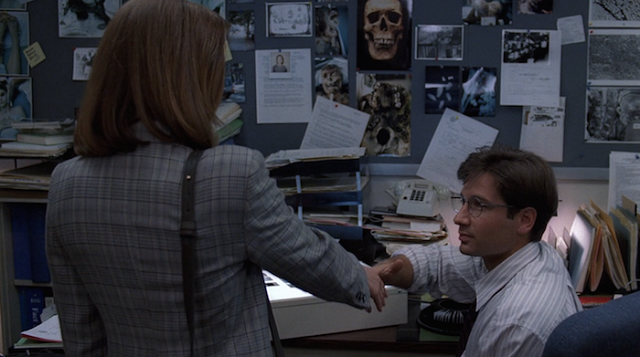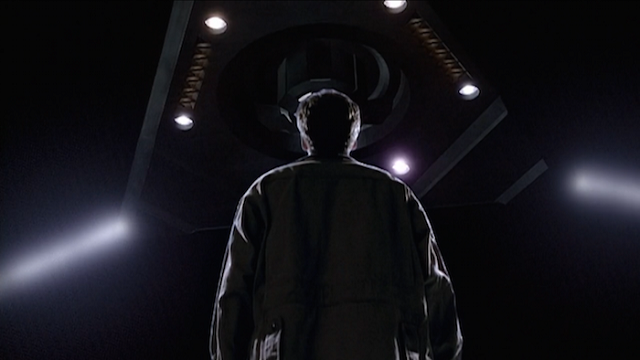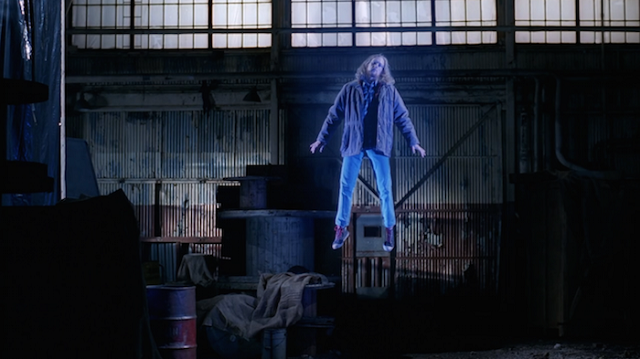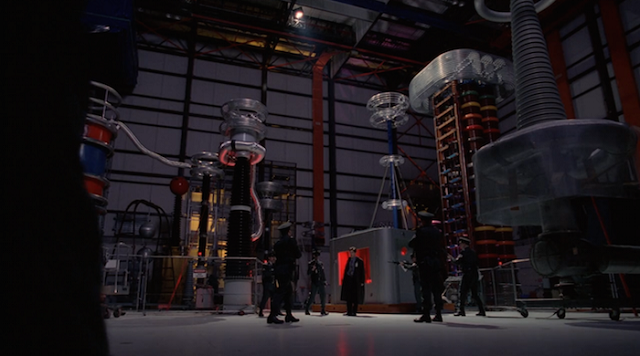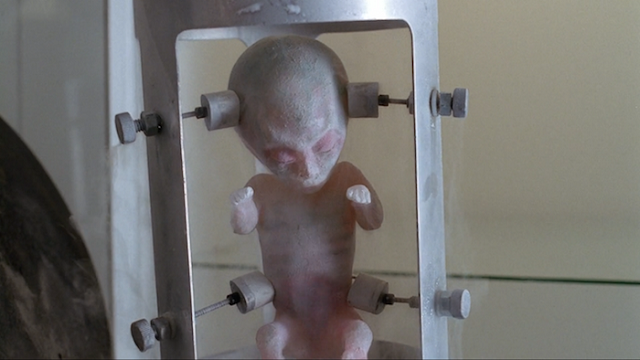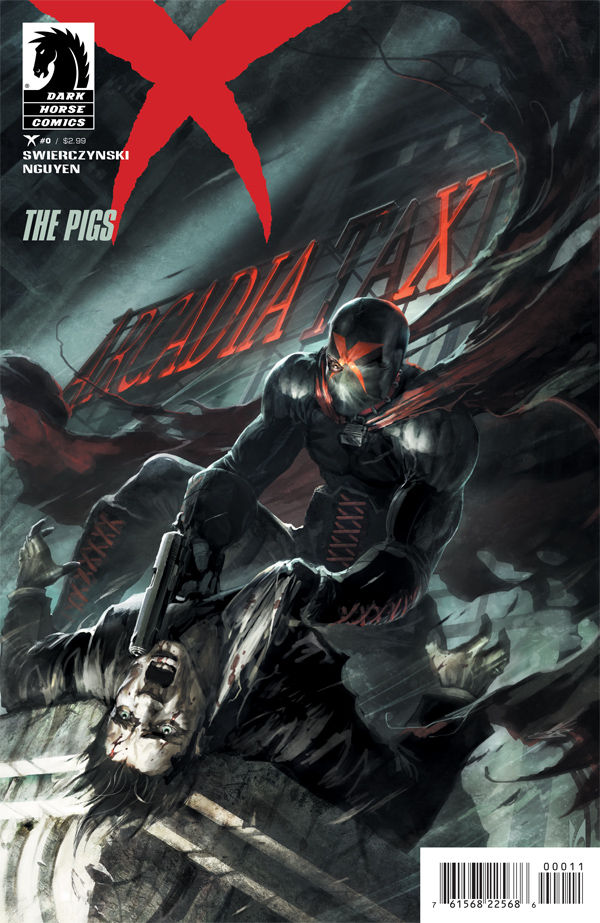Editor’s note: This article was originally published on July 16, 2015
Approximately four months ago, X-Files fans everywhere collectively freaked out as Fox announced its plan for a six-episode revival of the series, more than a decade after the show had ended. An actual UFO sighting could doubtfully cause such an effect from hardcore aficionados who have drooled over Mulder’s deadpan dark humor and Scully’s magnificent eye rolls for years. Then on July 7, Fox released a trailer for the re-airing of the series and called for an X-Files marathon challenge where participants watch an episode per day, as the revival was only 201 days away. Sound on Sight will be joining in the nostalgic fun, posting weekly articles on each season’s mythology, standalone titles, character development, and finally, a spotlight on a favorite episode.
Created by Chris Carter, the first episode of The X-Files aired on September 10, 1993. For each season, we will be dividing titles into those that follow the series’ mythology and “Monster of the Week” episodes focusing on isolated extraterrestrial incidents. The mythology refers to the lead duo’s investigation of an organization called the Syndicate who (SPOILER WARNING) produce human/alien hybrids while covering up information pertaining to an extraterrestrial colonization of the Earth. (/SPOILERS)
According to The Complete X-Files: Behind the Series, the Myths and the Movies, the episodes during the first season that introduce and follow the mythology are the pilot, “Deep Throat,” “Fallen Angel,” “E.B.E,” and “The Erlenmeyer Flask.”
The scene that launched a thousand ships
The pilot sets the spooky tone of the series while utilizing very few special effects. The episode opens with a young woman in a white night gown running frantically through a dark forest. She encounters a shadowy figure, whose mere presence causes leaves to swirl around in a fantastic storm, a simple imagery that results in impressive dramatic effects. The figure suddenly turns silvery as it approaches the girl and the screen fades to white. Later, we learn that girl’s name is Karen Swenson (Laura Lee Connery), and she is now dead.
This three-minute opening of the series illustrates the vulnerability of human beings living on their own planet as well as their helplessness in the face of the unknown. Many supernatural incidents in The X-Files take place in secluded areas that are seemingly outside of civilization and yet, operate under a strange, unearthly influence. As a result, the stories in The X-Files play like folklore, tales to prevent children from going out late at night. At least that appears to be what the government officials often do in the series, sealing up unexplainable occurrences from the public eyes. Agent Mulder (David Duchovny), considered to be the best analyst in the violent crime section, is a solitary force seeking the truth behind the red tapes, until Agent Scully (Gillian Anderson) comes along. An FBI officer who is also a trained medical doctor, Scully is quick to rebut Mulder’s theories with a constant demand for scientific proofs. Together, they make a dangerous (and ridiculously attractive) investigative team.
Already in the pilot, the government is seen as the bad guy. Mulder and Scully’s efforts are constantly harnessed by government officials whose shady activities range from altering autopsy reports to destroying evidences. While the pilot is influenced by the horror genre, the series itself recalls dystopian novels and films, where the threat of the oppressor comes within the characters’ own society. Rather than pitching a human vs. aliens dichotomy, The X-Files proposes a plight to break through social hierarchy, a Mulder and Scully vs. the US government fight. The first episode lingers on ambiguity as it ends with the elusive Cigarette Smoking Man putting the case’s evidence on a large shelf of other supernatural objects at the Pentagon, hinting at a larger conspiracy at work.
“Deep Throat”
“Deep Throat” marks the first appearance of its eponymous character who got his name from the infamous Watergate scandal’s informer. Deep Throat (Jerry Hardin) is a Syndicate member who, from time to time, approaches Mulder with inside information relating to the organization’s activities. In this episode, Mulder and Scully set out to investigate the missing Colonel Budahas (Andrew Johnston). Strangely enough, when the colonel returns, his wife claims that he is not her husband, but actually an impostor. The episode introduces the recurring conflict between seeming and being. People and events in The X-Files are never what they appear to be. More significantly, like Colonel Budabas’ troubled home, the American family is portrayed in the show as an incredibly fragile social structure. Underneath the romanticized Americana ideal lies hidden turmoils and traumas. Mulder himself loses his sister to an alien abduction, a broken memory that motivates him to relentlessly pursue supernatural hypothesis.
The cinematography of The X-Files’ first season harbors an obsession with light and its deceptive nature. Often thought of as the illuminating source of truth or a divine power, light in The X-Files instead emerges as a constant threat. In “Deep Throat,” Mulder is seen wandering the takeoff path of the base, dazed and confused, when suddenly, a military-crafted saucer flies over his head and bathes his entire body in blinding white light. This is the truth Mulder has been looking for; it is out in the open and yet, completely out of reach. The inviting light offers Mulder no information nor insight and leaves him ultimately stuck in the dark.
“Fallen Angel”
“Fallen Angel” proves to be another masterful episode that plays with light and darkness. After being informed by Deep Throat of a UFO crash in Townsend, Wisconsin, Mulder heads to the town and gets himself arrested while snooping around the site. By this point, it has dawned on both Scully and Mulder that aliens are not the only ones hiding in the dark; government officials also curiously remain in the shadows. Except when absolutely necessary, The X-Files rarely introduces the names of characters working in forces against the agents. They remain nameless, and sometimes even faceless, as they quietly watch over the duo’s every move.
For the first time, serious doubts are cast over whether Deep Throat is actually on Mulder’s side. Near the end of the episode, Mulder is accused of overstepping his boundaries and abusing his authority, charges that would lead to the closing the X-Files’ department. However, Deep Throat steps in to protect Mulder and Scully’s office, for dubious reasons. “Keep your friends close, but your enemies closer,” says the Syndicate member, implying that Mulder might unconsciously play a part in keeping classified information under surveillance. Unlike in earlier episodes, Deep Throat is now filmed in broad daylight, intensifying his status as a threat to the agents. While aliens only move at night, Deep Throat can attack at any given hour with ease.
“E.B.E.”
“E.B.E.” and “The Erlenmeyer Flask” finally shed light on what it is that the Syndicate actually does. Both episodes are concerned with aliens in biological life forms, highlighting the importance of visual evidence in the agents’ quest to confirm extraterrestrial existence. Mulder constantly says, “I want to believe,” but what he essentially means is that he needs to see in order to believe. While Mulder has witnessed multiple strange incidents throughout the first season. Scully for some reason is always visually shut out from these events. She cannot see, therefore she cannot believe. In “E.B.E.,” the agents follow a truck carrying a UFO occupant but the entity is killed before they can examine the creature with their own eyes. The ambiguity of visual validation emerges again and again during the episode, most significantly when Deep Throat admits to giving Mulder’s fake pictures of UFO sightings. The emphasis on visual evidence affects the audience’s perception as well; viewers are reluctant to believe what Mulder sees due to the possibility that the supernatural occurrences might exist only in his head.
“The Erlenmeyer Flask,” the season’s finale, is especially painful to watch, for once again, Mulder gets dangerously close to exposing the government’s supernatural projects, only to have the chance snatched out of his grasp. Tipped by Deep Throat, Mulder and Scully stumbles upon a Dr. Berube (Ken Kramer) who injects alien genes into terminally ill human volunteers to prolong their lives. The Syndicate, however, does not want these alien-hybrids to spill their secrets, and proceeds to murder both these creatures and their creator in the process. During his attempt to protect a hybrid, Mulder is captured by the organization and Scully is forced to steal the original tissue of an alien from a classified lab in exchange for her partner’s freedom. The moment is a turning point for the series: the existence of extraterrestrial beings is no longer Mulder’s goal, it in fact becomes a visually distinguishable truth.
“The Erlenmeyer Flask”
The scene where Scully enters the laboratory is especially significant. The agent wears a Christian cross necklace, signifying her religious upbringing. What she sees in the nitrogen container, however, completely betrays both the symbol on her neck and her scientific beliefs. Afterwards, as Scully sits in her car, completely silent, with a scary, weird alien embryo in hand, the display of her totally shattered foundations of existence is almost frightening to watch. Her system of trust is tested even further. While Mulder is released by the Syndicate, its members fatally shoot Deep Throat, despite him being one of their own. Deep Throat’s final words are, “Trust no one,” cementing the ambiguity that surrounds the nature of the Syndicate’s works.
The first season of The X-Files ends on a gloomy note. Mulder calls Scully to tell her that the X-Files have officially been shut down while the Cigarette Smoking Man places the vase with the alien’s tissue on the Pentagon’s shelf of extraterrestrial objects, destined to be buried and forgotten. Suddenly, we find ourselves at the pilot’s ending again, a frustrating circular motion where new information is learned yet none can be divulged. While the season is sometimes marred with expository dialogue as it oversees the introduction of the series’ mythology, it still produces some of the most cinematic episodes of the show. Covered in smoke and mirrors, both literally and metaphorically, these vignettes perfectly capture the mood that will haunt the seasons that follow, an atmosphere that is painted with shades of light and filled with delicious paranoia.
